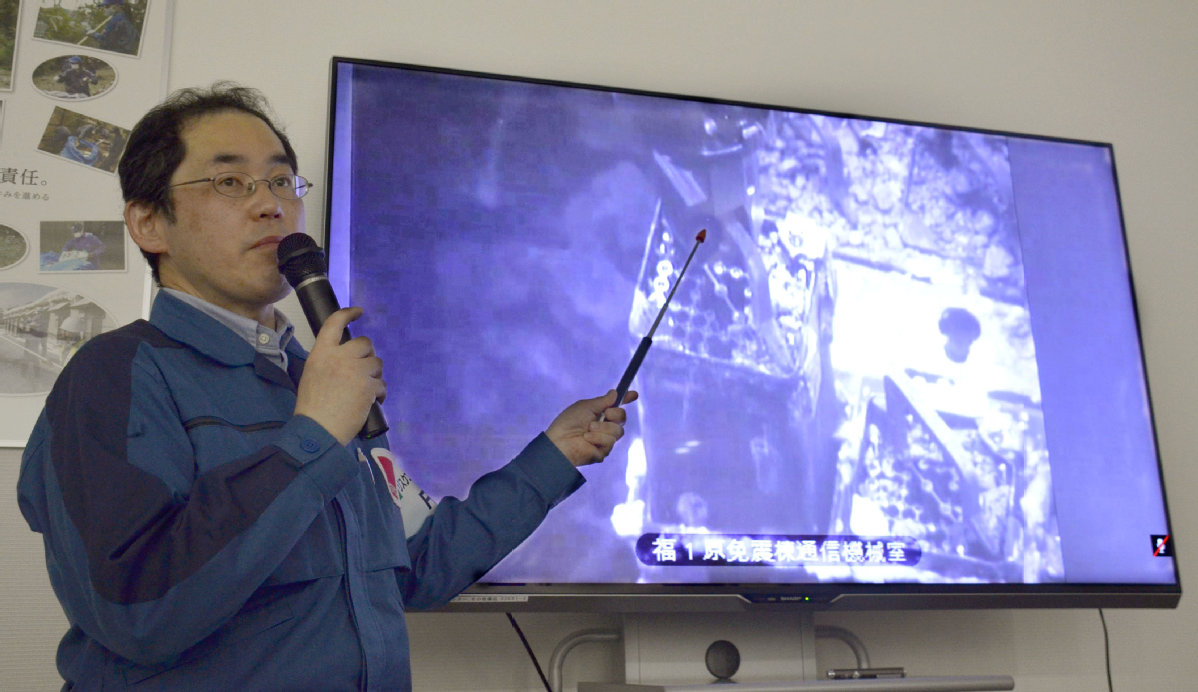Fuel rods removed from Japan Fukushima power plant
China Daily | Updated: 2019-04-17 09:20

TOKYO - The operator of Japan's crippled Fukushima power plant on Monday began removing atomic fuel from inside a building housing one of the reactors that melted down in 2011.
The delicate operation represents the first time the Tokyo Electric Power Co, or TEPCO, has pulled out fuel rods from inside a highly contaminated building containing the melted-down reactor, and comes four years behind schedule.
Due to high radiation levels, technicians used remote-controlled equipment to haul fuel from a "storage pool" inside the building.
Operations were briefly suspended on Monday afternoon after a problem with the equipment removing the fuel, but resumed shortly afterward.
"We finally started this work. We will spend two years removing 566 units of fuel from reactor three," said Takahiro Kimoto, a TEPCO spokesman.
TEPCO removed four units as planned on Monday, with workers continuing to remove debris that have fallen inside the pool and other areas, Kimoto told reporters.
"Factors such as removal of debris and various troubles have caused delays, which we realize have caused significant worries to people in the region and others," Kimoto said.
"Putting safety as our priority, we will carefully continue this work," he promised.
Engineers have had to contend with clearing earthquake debris inside the building and an array of other technical challenges, said TEPCO spokeswoman Yuka Matsubara.
"We had to proceed carefully (to remove debris), and we needed to take measures as dust would waft up and increase radiation readings," she said.
TEPCO engineers will not yet attempt to extract molten nuclear fuel that remains deep inside the mangled reactor. This is considered the most difficult part of the massive cleanup operation and is not expected to begin until 2021.
Reconstruction plan
In February, TEPCO sent a remote-controlled probe to pick up pebble-sized pieces of the melted fuel in a bid to find out whether the material could be moved.
The next step in that painstaking process will be to remove some of the fuel as a sample, which is scheduled to happen by March 2020.
The company also faces other difficult challenges, including working out how to dispose of large quantities of contaminated water stored in containers at the plant site.
In the worst nuclear disaster since Chernobyl in 1986, reactors one, two and three at the Fukushima Daiichi power plant melted down after a deadly earthquake and tsunami that struck Japan in 2011.
The tsunami killed around 18,000 people and caused widespread devastation, and the nuclear meltdown forced the evacuation of areas near the plant.
Reactors four through six were offline at the time of the disaster for inspections and did not suffer meltdowns, though reactor four was damaged by an explosion in the days after the tsunami.
In December 2014, TEPCO finished removing all 1,535 units of nuclear fuel kept inside the storage pool at reactor four.
Agence France-Presse























